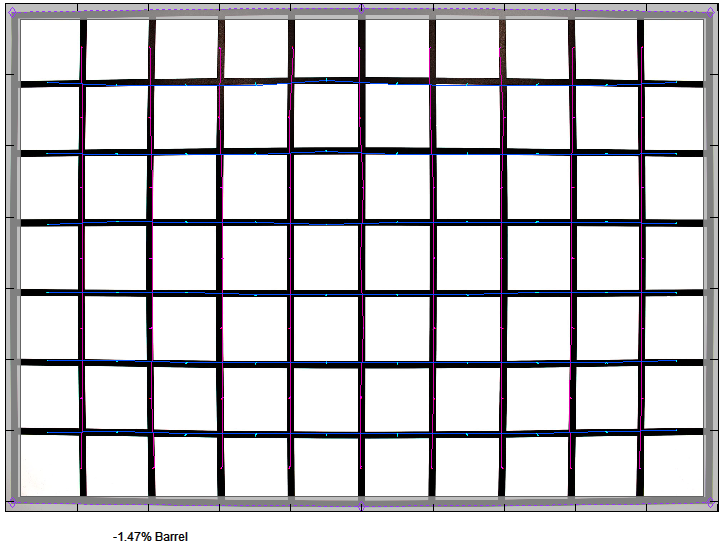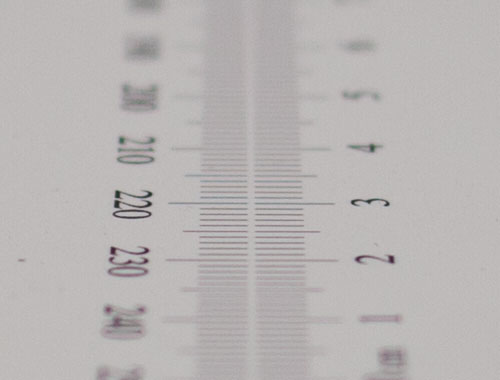|
Canon EF 24mm f/2.8 USM IS - Review / Test Report - Analysis |
|
Lens Reviews -
Canon EOS (Full Format)
|
|
Page 2 of 3

Distortion
The Canon lens produces slight to medium amount (1.5%) of barrel distortion. This is rarely noticeable and lower than for most zoom lenses at 24mm.

Vignetting
Typical for most lenses used on full format cameras, the EF 24mm f/2.8 USM IS shows a heavy light falloff at large aperture settings. A vignetting of ~2.6EV (f-stops) will be very obvious at f/2.8. However, the issue is substantially reduced at f/4. The vignetting doesn't really decrease anymore from f/5.6 and at 0.8EV, the issue remains somewhat visible.

MTF (resolution)
The resolution characteristic of the lens is pretty good but not without flaws. The center sharpness is great straight from f/2.8. However, the border quality are good to very good but the corners are downright soft here. The corner quality improves significantly at f/4. The peak performance is reached at f/5.6 with a very good outer image region and an outstanding center. Diffraction effects start to have a limiting factor from f/11 onward although this setting is still good enough for very high quality images. f/16 should be avoided though. The field curvature (flatness of the focus field) is marginal.
The centering quality of the tested sample was very good.
Please note that the MTF results are not directly comparable across the different systems!
Below is a simplified summary of the formal findings. The chart shows line widths per picture height (LW/PH) which can be taken as a measure for sharpness.
If you want to know more about the MTF50 figures you may check out the corresponding Imatest Explanations
Chromatic Aberrations (CAs)
Lateral CAs (color shadows at the image borders) show up with an average pixel width of 1px or less at the image borders. This is still low and usually nothing to worry about.

Bokeh
A moderately fast wide-angle lens may not be an obvious candidate for a bokeh test but you can achieve a shallow depth-of-field when choosing short focus distances.
The out-of-focus highlight rendition is pretty clean with a slight outlining effect. As usual the shape highlight discs deteriorate towards the corners - this can be reduced by stopping down.
 The quality of the general blur in the focus transition zone is quite good at least for a lens in this focal length class. The foreground blur is a bit busy whereas the more critical background blur is quite smooth and better than most zoom lenses for instance - a positive characteristic that it shares with the EF 28mm f/2.8 USM IS.
The quality of the general blur in the focus transition zone is quite good at least for a lens in this focal length class. The foreground blur is a bit busy whereas the more critical background blur is quite smooth and better than most zoom lenses for instance - a positive characteristic that it shares with the EF 28mm f/2.8 USM IS.

Bokeh Fringing / Longitudinal Chromatic Aberrations (LoCA)
The so-called bokeh fringing refers to colored halos in the focus transition zone. Hard contrasts can have a purple color tint in the foreground changing to greenish beyond the focus point. The EF 24mm f/2.8 USM IS shows just a slight amount of bokeh fringing at f/2.8. There're only traces left at f/4 and the issue is gone from f/5.6 onward.
When browsing through the sample crops below you may also notice that the focus point moves very slightly towards the background (=residual spherical aberrations) but this is mostly irrelevant from a real life perspective.
|
Move the mouse cursor over the f-stop marks below to observe the respective LoCAs
|
| f/2.8 |
f/4 |
f/5.6 |
|

|
|